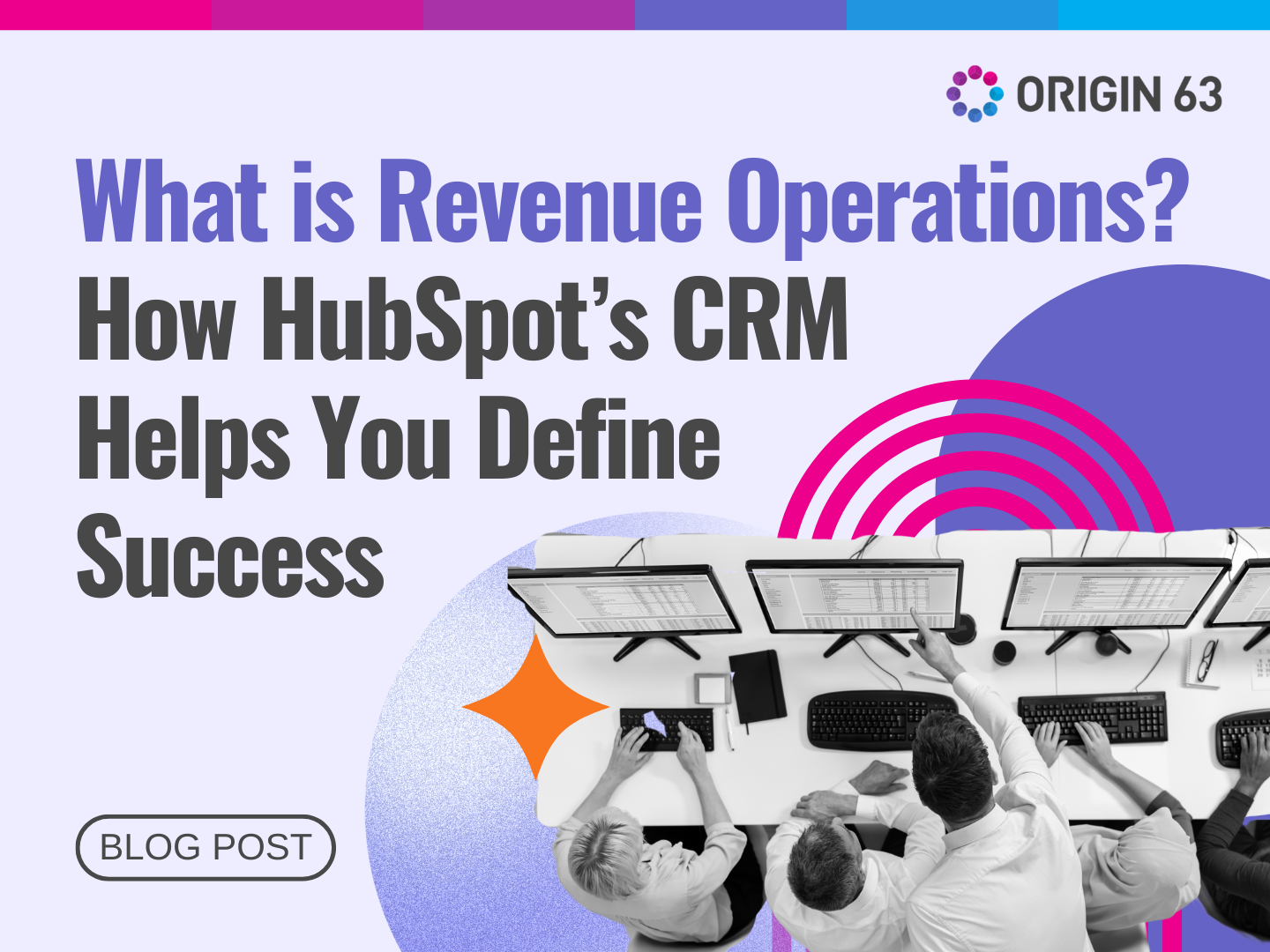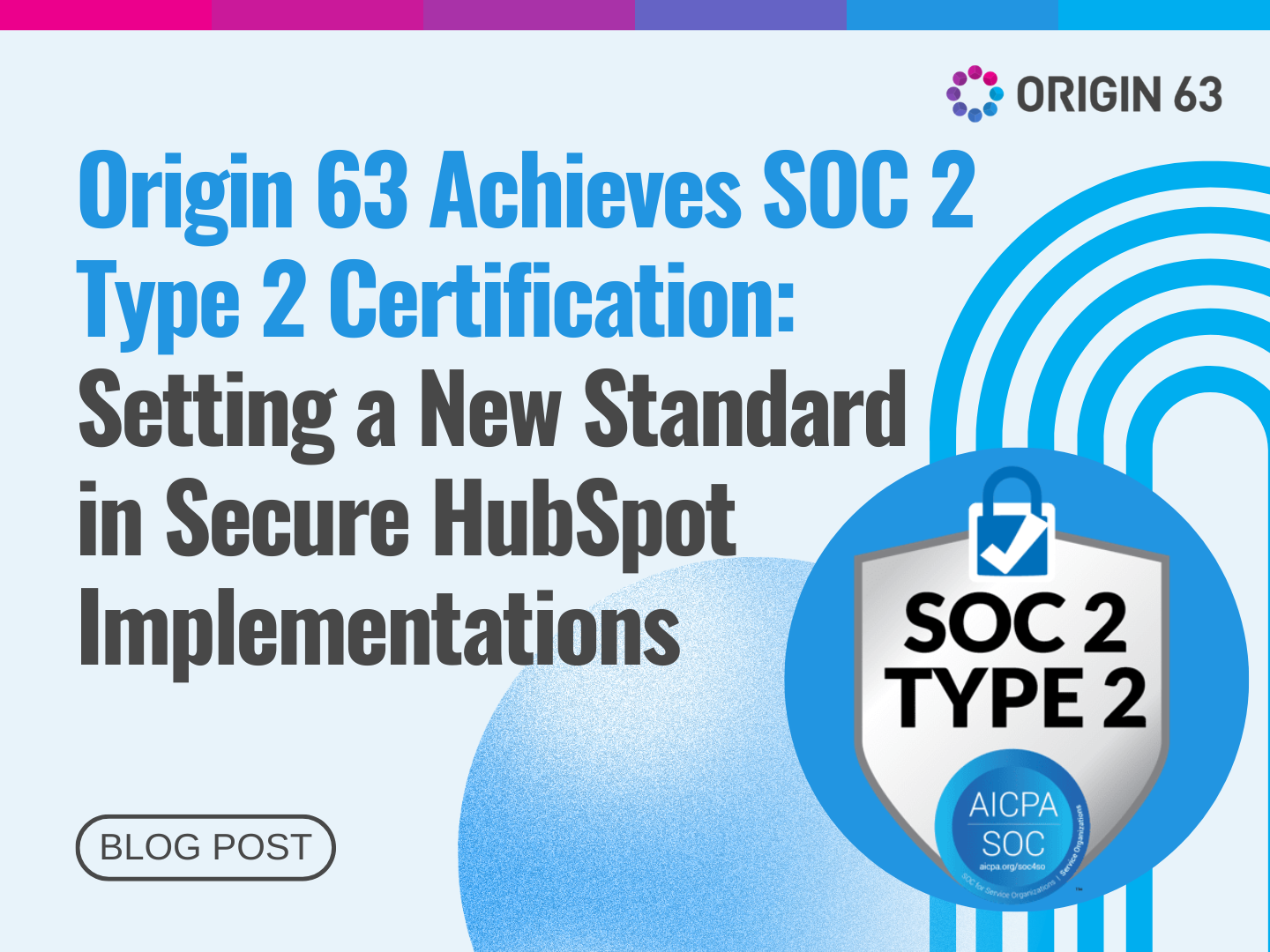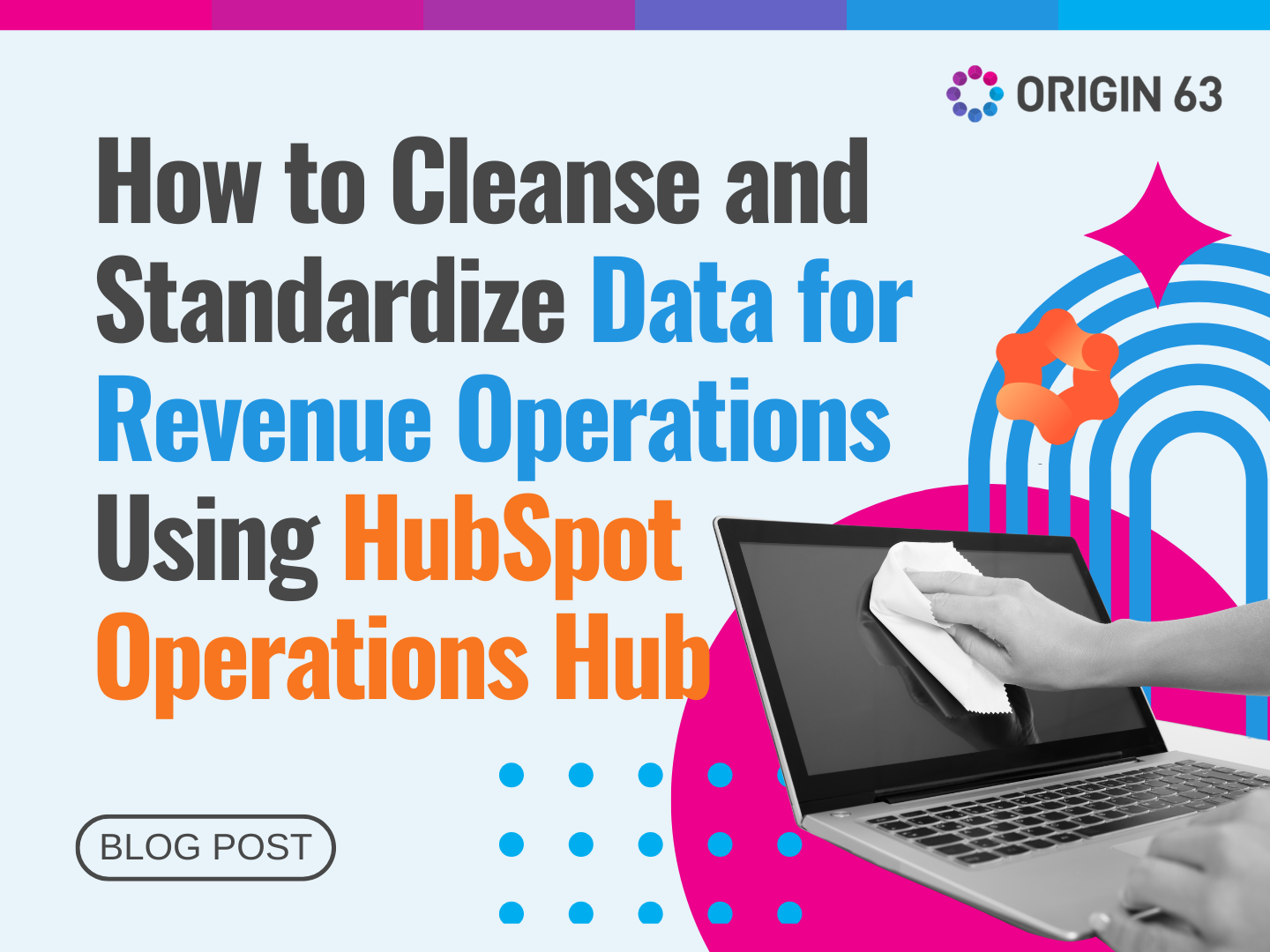Many growing businesses struggle because their sales, marketing, and support teams operate in silos and lack shared goals.
This causes confusion, missed opportunities, and a poor customer experience. Revenue Operations is a way to fix that by bringing all these teams together to work as one.
In this blog, you’ll learn what Revenue Operations is and how HubSpot’s CRM can help you track success, improve teamwork, and grow smarter.
What Is Revenue Operations (RevOps)?

Revenue Operations (RevOps) is a method that helps your sales, marketing, and customer support teams collaborate more effectively.
Instead of each team using different tools and chasing different goals, RevOps brings them into one system where everyone is on the same page.
RevOps is all about ensuring your entire business is focused on one thing: growing revenue smartly and consistently. It achieves this by setting shared goals, streamlining processes, and making data more accessible and trustworthy.
A significant part of RevOps involves utilizing data to inform better decisions. For example, it helps you track key numbers like:
- Annual Recurring Revenue (ARR): How much money does your business make each year from subscriptions or repeat sales?
- Customer Lifetime Value (CLV): How much is one customer worth over time?
- Win Rate: How many deals does your sales team close compared to how many they try for?
- Sales Cycle Time: How long does it take to turn a lead into a paying customer?
Many companies are just getting started with RevOps. Over half of organizations have only had a revenue operations function for 1–2 years. But even in that short time, it’s already helping teams feel more connected, reducing waste, and making smarter choices as they grow.
Why Revenue Operations Is Important for Growing Businesses
As your business grows, things get more complex. You have more leads, more tools, and more people working on different parts of the customer journey. Without a system to keep everything connected, it’s easy for things to fall through the cracks.
That’s why Revenue Operations matters. It helps your sales, marketing, and support teams stay aligned, move faster, and create a better experience for your customers. Here’s how:
1. It Helps Teams Work Together Instead of Separately
Sales, marketing, and customer support often use different tools and follow different processes. This can cause confusion, delays, and even lost deals.
RevOps brings everyone under the same system. That means teams can see the same data, understand each other’s goals, and pass off work more smoothly, such as when marketing hands over a lead to sales or sales passes a new customer to support.
2. It Reduces Mistakes Caused by Bad Data

One of the biggest problems that growing businesses face is dealing with bad or messy data. This leads to errors such as duplicate emails, incorrect customer information, or missed follow-ups.
Seventy-five percent of companies say that poor data quality leads to duplicate or messy outreach, which costs them customers. RevOps helps address this by cleaning up your data and keeping it organized, so your teams can trust what they see and use it effectively.
3. It Keeps Everyone Focused on the Same Goals
When teams work in silos, they often set their own goals that don’t always match. For example, marketing might focus on generating more leads, while sales focuses more on closing deals.
RevOps ensures that everyone is working toward the same outcomes, such as revenue growth, customer retention, or shorter sales cycles.
With shared goals and clear metrics, it’s easier to measure success and adjust when things aren’t working.
How RevOps Impacts Sales, Marketing, and Customer Service
Most businesses already know that sales and marketing should work closely together. But to grow in a smart and sustainable way, customer service also needs to be part of the team.
Revenue Operations brings these three groups together to create a smooth experience for your customers, from first contact all the way to long-term support.
Here’s how it helps each team do their job better:
Sales: More Time Selling, Less Time Fixing Problems
Sales reps often lose time chasing the wrong leads or updating systems instead of talking to customers. With RevOps, they get cleaner data, clearer handoffs, and better tools that let them focus on selling.
Right now, sales reps only spend 28% of their week selling. The rest of their time is spent on administrative work and resolving data issues. With RevOps and a connected CRM like HubSpot, your sales team can automate repetitive tasks and eliminate time wasted on unqualified leads.
Marketing: Smarter Lead Generation and Follow-Up

RevOps helps marketing teams know which leads actually turn into customers. Instead of just collecting names and emails, they can focus on quality, not just quantity.
With shared dashboards and better data, marketers can create campaigns that bring in high-fit leads. And when marketing and sales use the same system, leads don’t fall through the cracks.
Customer Service: A Better Experience for Every Customer
Once someone becomes a customer, they still expect quick answers, helpful service, and smooth support. RevOps connects customer service with the rest of the revenue team so they can see what happened before the sale and solve issues faster.
When service teams have full context, like the customer’s deal history, past emails, or common problems, they can personalize support and build stronger relationships.
How HubSpot’s CRM Makes Revenue Operations Work
Having a Revenue Operations strategy is a great start, but to really make it work, you need the right tools. That’s where HubSpot’s CRM comes in.
HubSpot gives your sales, marketing, and customer service teams one place to track customers, share information, and measure success. No more guessing what happened in another department or copying data from one system to another.
Let’s look at a few key features that help bring your RevOps strategy to life:
1. Data Sync: Connect Your Tools Without the Mess
Most businesses utilize multiple systems to manage customer data. For example, your marketing team might use Mailchimp while your sales team uses Outlook or another CRM. Without a way to keep those tools connected, it’s easy to lose or duplicate information.
HubSpot’s Data Sync enables you to connect with over 90 popular tools, allowing data to flow in both directions. If you update a contact’s phone number in one system, it automatically updates everywhere else.
This keeps your records clean and up to date, eliminating the need for manual file exports and imports.
You can choose what information gets shared, and you don’t need to know how to code. Simply select the app, choose the fields, and the system takes care of the rest.
2. Automation: Save Time and Make Fewer Mistakes

As your business grows, you get more leads and more customer touchpoints. Keeping up with every task manually can slow teams down and cause errors. That’s where automation helps.
HubSpot’s automation tools let you create workflows that handle repetitive work. For example:
- Automatically send welcome emails when someone fills out a form.
- Assign leads to the right salesperson based on region or industry.
- Create follow-up tasks if a customer hasn’t been contacted in a few days.
You can even build more advanced workflows using custom code if your team needs something special, like syncing with an external system or enriching a contact record with third-party data.
The best part is that your team can spend more time helping customers instead of clicking through checklists or updating spreadsheets.
3. Clean, Reliable Data: Fix Messy Info Before It Causes Problems
When your data is messy or outdated, it hurts everything. It makes reports less accurate, leads to bad outreach, and causes confusion across teams.
HubSpot’s Data Quality Automation helps solve this by automatically fixing common issues. It can:
- Capitalize names properly.
- Reformat phone numbers
- Standardize dates.
- Remove extra spaces or symbols.
This makes your CRM easier to use and more trustworthy. Clean data also powers more effective campaigns, improved sales follow-up, and enhanced customer service.
This matters because U.S. companies say that 27% of their revenue is wasted due to incomplete or inaccurate customer or contact data. Cleaning up your CRM isn’t just a nice-to-have. It’s essential to doing better business.
4. Custom Reports and Datasets: Get the Answers You Need, Fast
As your team grows, you’ll want better ways to understand what’s working and what’s not. But building reports from scratch every time can be confusing or time-consuming, especially if the data is scattered or hard to interpret.
HubSpot’s Datasets feature helps with this. It lets your operations team create organized data tables that others can use to build reports. This saves time, maintains consistency, and ensures teams use accurate numbers.
You can also build custom formulas inside HubSpot, such as:
- How long does it take to close a deal?
- How fast do leads move through your sales stages?
- How much commission does a rep earn this month?
This helps every team see the full picture and make smart decisions.
5. Scale with Confidence: Start Simple and Grow Over Time

HubSpot is built to grow with your business. You can start with free tools to get organized, then unlock more features as your needs grow.
Smaller teams can benefit right away from features like contact management and basic automation. As you scale, you can add powerful tools like programmable automation, advanced reporting, and deeper integrations—all without needing to switch systems or start from scratch.
This flexibility makes HubSpot a great choice for building and scaling a successful Revenue Operations strategy.
Success Metrics You Can Track With HubSpot CRM
Once your teams are aligned and your tools are connected, you need a way to measure what’s working. That’s how you know your Revenue Operations strategy is helping your business grow.
With HubSpot’s CRM, it’s easy to track the numbers that matter most. These are called success metrics, and they help you assess how your sales, marketing, and service efforts are performing in tandem.
Here are a few important metrics you can track inside HubSpot:
1. Annual Recurring Revenue (ARR)
This illustrates the annual revenue you can expect from repeat customers, particularly if you offer subscriptions or ongoing services. HubSpot lets you track this in your deals pipeline, so you can see your total revenue at a glance.
2. Customer Lifetime Value (CLV)
This is the total value a customer brings to your business over time. By keeping all your contact, deal, and service data in one place, HubSpot helps you calculate this number easily. It’s useful for deciding how much to invest in customer support and retention.
3. Win Rate
Win rate tells you how many deals your team is closing compared to how many they’re working on. With HubSpot, you can filter this by team member, deal stage, or campaign to find patterns and improve performance.
4. Sales Cycle Time
This is the average time it takes to close a deal, from initial contact to the signed contract. Shorter cycles typically result in smoother handoffs and higher-quality leads. HubSpot can display this data in custom reports, helping you identify and resolve delays.
5. Customer Turnover Rate
Also known as the churn rate, this metric indicates the number of customers who cease doing business with you over time.
You can track this in HubSpot by looking at service tickets, inactive accounts, or lost subscriptions. Keeping churn low means your teams are effectively supporting customers after the sale.
Bringing It All Together
Growing a business is easier when your teams work together, your data is clean, and your tools are connected. That’s what Revenue Operations is all about.
With HubSpot’s CRM, you can support your sales, marketing, and customer service teams in one place. You’ll be able to track the numbers that matter, fix broken processes, and help your team stay focused on what drives revenue: happy customers.
If you're just starting with RevOps, take it one step at a time. Focus on alignment, clean data, and measuring your progress. The right tools can help you move faster and smarter.
Need Help Making RevOps Work for You?
Origin 63 can help you set up HubSpot the right way and build a strategy that supports your whole revenue team. From automation to clean data to smarter reporting, we ensure your systems are built to scale.
Let’s work together to grow your business with confidence.














.png?width=90&height=90&name=Arrows%20Partner%20Badge-test%20(1).png)

